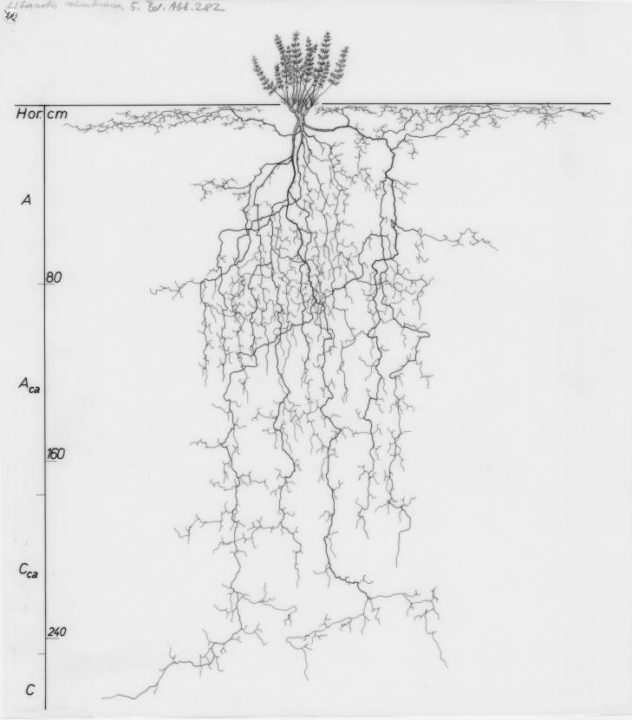Useful tips for organic leadership, inspired by a conversation with a client and reading the book Team of Teams.
Today we would like to tell you about a reflection born out of the increasingly evident need for non-traditional leaders in an unpredictable world. We have imagined leaders as gardeners, able to develop and evolve their own leadership style, with flexible and agile processes, at the service of the reality in which they are immersed.
A Spanish proverb quotes “In gardens, more grows than what the gardener thinks he has planted”: we will try to tell you how this metaphor can lead to concrete results in an organization.
The manager of a large industrial plant undergoing transformation, a client of ours, shared with us his perception of how many opportunities to participate in creating something truly relevant often are missed by the leaders of his company.
Why is that? Because they cannot make time to process what is happening.
In times of great change, it is essential to reflect on the deeper meaning of what is happening, and the difficult times one is facing. But it is not easy to find the time to observe the seed that is planted, the plant that grows, and to help one’s own people to do it together with us.
The project that was born with this client is also the result of our great passion for self-organization and the reading of McChrystal’s book, “Team of teams“.
Our goal was giving time, voice, and space for action to teams and making it happen in all its possibilities! But this is just the tip of the reflection which needs to be explored further.
companies and the search for meaning in a complex world
Today’s complex world is increasingly unpredictable, and companies rely on the teamwork of those in their organization to make sense of this organizational complexity. By organizing “teams of teams” with the aim to work in a self-organizing model, companies can transform their workforce into a single, highly adaptable organism with a shared vision.
To achieve this organic organizational functioning, efficiency can no longer be the ultimate goal!
Of course, embracing this mindset requires an awareness of the functioning of the reptilian part of our brain and the evolutionary stages that have determined our mission as humans today.
We are not questioning efficiency in absolute terms, but the fact that most organizations still consider efficiency as the most important objective by far. Consequently, they prefer a hyper-specialized set of tools and are not at all open to the new practices that the increasingly complex world in which we live in requires.
It was Frederick Winslow Taylor and his scientific organization of work that developed the concept that the best result is the one obtained by ‘cutting off’ every possible second from the various processes. This produced such astonishing results that even today it is often the route we take to make increasingly difficult accounts come back.
the unpredictability of outcomes in an interdependent reality
Yet, in the complex and increasingly interdependent reality in which we live, the results become highly unpredictable. Do you remember the lecture given by Edward Lorenz in 1972?
“Can the flap of a butterfly’s wings in Brazil cause a tornado in Texas?”
Some of us smiled as we moved from meteorological theory to its ‘unlikely’ social implications. Then, some years later, in a YouTube video in 2010, 20 million people could see a man named Tarek setting himself on fire in protest against police corruption in a small town in Tunisia. Many of these people then began their own protests, which led to the end of President Mubarak’s 30-year reign in neighboring Egypt. This outcome was completely unpredictable at the time of Tarek’s first gesture.
Taylor’s scientific management was designed for a world in which an all-seeing manager could more or less accurately predict the outcome of a given action. As Tarek and YouTube demonstrate, the pandemic we are experiencing and so many other less dramatic events that are happening to us daily, things today are different.
the need to work more on being than doing
This is how we came to create a programme with the Client that works more on being than on doing. He said:
“My colleagues are doing a great effort every day to transform the factory, but I am not sure that they have the time to fully understand what it all means for them, their people, and the eco-system. They are so busy doing and doing and doing! I want to design moments for them where they can refocus, they can share and grasp the broader meaning of what is happening here, now.”
The same client pointed out that in the last few months, before the opening of a large new plant, “you live like a minefield“.
“We know what happens when we claim to be in a minefield!” – he said – “the simplest reaction is to structure a team of deminers, adequate in number and capacity.”
And there Taylor appears once again… ????
The Client continued:
“…but what I need instead are teams with an attitude of resilience and adaptability, who are prepared to move through mines as they arise and move together without pointing fingers at each other!”
threats and opportunities can come out of nowhere
If today’s world is complex, so are the threats and opportunities that lurk within it. They can come out of nowhere, from any direction, and in any form. Yes, we should prepare for and protect ourselves with the help of robust, well-honed mechanisms, but this would also require a huge amount of energy in trying to understand the nature of each event. If we can no longer rely on mechanisms alone, how can we do it?
We could shift some of our time away from constantly trying to defend ourselves against endless possible threats, and instead direct this energy towards the future, with an alert and open mind. We could invest in enabling operational teams to be adaptive and focus them partly on dealing with possible contingencies, partly on seizing unexpected opportunities.
How do we do this? Where do we start?
corporate culture and nature’s inspiration
Nature inspires us. Think of the trees in the forest and the rhythmic movement of their beautiful foliage in the wind: those tips that express such vividness are like that, thanks to their powerful and widespread submerged part. Researchers have found that, regardless of species, climate or geographical location, the roots of trees are one and a half to four times larger than the projection of the crown and are generally found in the top 60 cm of soil. The roots can go even deeper, but only if the soil conditions are favorable.

Libanotis schrenkeana
So, a group of bold and knowledgeable teams can adapt and survive strong winds and storms, however, this is dependent on the extent to which everyone is rooted in the fertile soil of the corporate culture.
That is why we have to take care of the corporate culture so that:
- people’s impulses vibrate harmoniously with the purpose (goal/evolutionary purpose) of the organization they serve to the point where it is no longer possible to understand who is serving whom;
- the principles and values of the company are vital and heartfelt and help everyone to orient themselves and others with respectful firmness;
- organizational geometries emerge from the common vibration in the dynamic form that is needed today, which does not have to be the same as yesterday or remain so tomorrow
Sharing and collaborating within psychologically safe spaces is the starting condition for this to happen. Experiencing these spaces with confidence, loving the identity that gradually takes shape, this is the way!
Whenever we talk about the Google, Spotify, Automattic or Hayer models, the only thing we see are the tips of trees moving in the wind, and we often hear narratives that we cannot ‘copy and paste’. Instead, it would be interesting to look at their roots, which are their essentials:
- the customer process;
- the leadership process;
- the support process.
Everything else is also important, of course, but without looking at the essentials it would be as being at the Louvre, looking with admiration at the frame supporting Leonardo’s Mona Lisa, but the grand painting was covered up.
the need for non-traditional leaders
The leader of a “team of teams” needs to focus on culture instead of day-to-day operations, just as a gardener tends the soil while each plant grows independently. But if the team already has all the information and control it needs to make effective and informed decisions, does it need leaders?
Yes, it does! But non-traditional leaders. It needs a leader who respects the autonomy of the team and who is resilient himself.
Traditionally, managers have been viewed (still today) as commanders of an army, sitting on the side-lines, giving input to subordinates who carry out their tasks with respect. Ultimately, leaders are still the ones who determine where everyone goes, what they have to do and by what means.
Such an approach is de-empowering and does not consider the incredible problem-solving power of a team of teams. What is the point of having dynamic, high-functioning teams that manage huge amounts of information and are able to make decisions, if they are not empowered to act?
Even in the rare case where there is enough time to consult a leader on his or her opinion, it would still be better to allow teams to make their own decisions. Not only is this more effective, but it makes the team more involved in the execution of their plan.
the evolution of the leader role
So, what role does the much-needed leader play? The leader’s job is essentially to make sure that the culture, that is, the element that holds these teams together, remains viable. The leader’s challenges are:
- to be able to inspire by describing images and using metaphors that show the ‘current way’ and the ‘new way’;
- to hold open spaces and letting go;
- to learn that to lead mostly means to listen with head and heart, without judgement and without cynicism;
- respecting one’s own biography and that of the whole organization by reading its past and potential evolution.
- keep high and active powerful questions that promote experimentation and the development of new steps;
- encouraging and channelling insights.
The leader enables the conversations and makes sure that everyone participates. He is the person who secures the process. He makes sure that teams are empowered to make their own decisions and that all agents are part of that. This is done from the perspective of servant leadership, serving one’s team.
In other words, the leader tends to the culture as a gardener would, while the team manages the day-to-day decisions, and this is repeated in a fractal way.
an example of organic leadership
Let us illustrate an example: internal communication. The sap of culture, nurtured by the leader, is useless if it does not reach everyone and permeate project management. Those who are not reached will feel alienated and uninvolved and consequently detach.
Internal communication becomes a fundamental part of the retention process and is no longer the exclusive preserve of a central body.
One can be the gardener of internal communication, nurture it, take care of it, but it is the heritage of all teams. Therefore, it becomes crucial to identify who is responsible for it in each project and also in the relationship between different projects.
TRY TO THINK ABOUT YOUR ROLE IN YOUR TEAM: WHAT DOES IT MEAN FOR YOU TO BE A NON-TRADITIONAL LEADER, A GARDENER LEADER?

